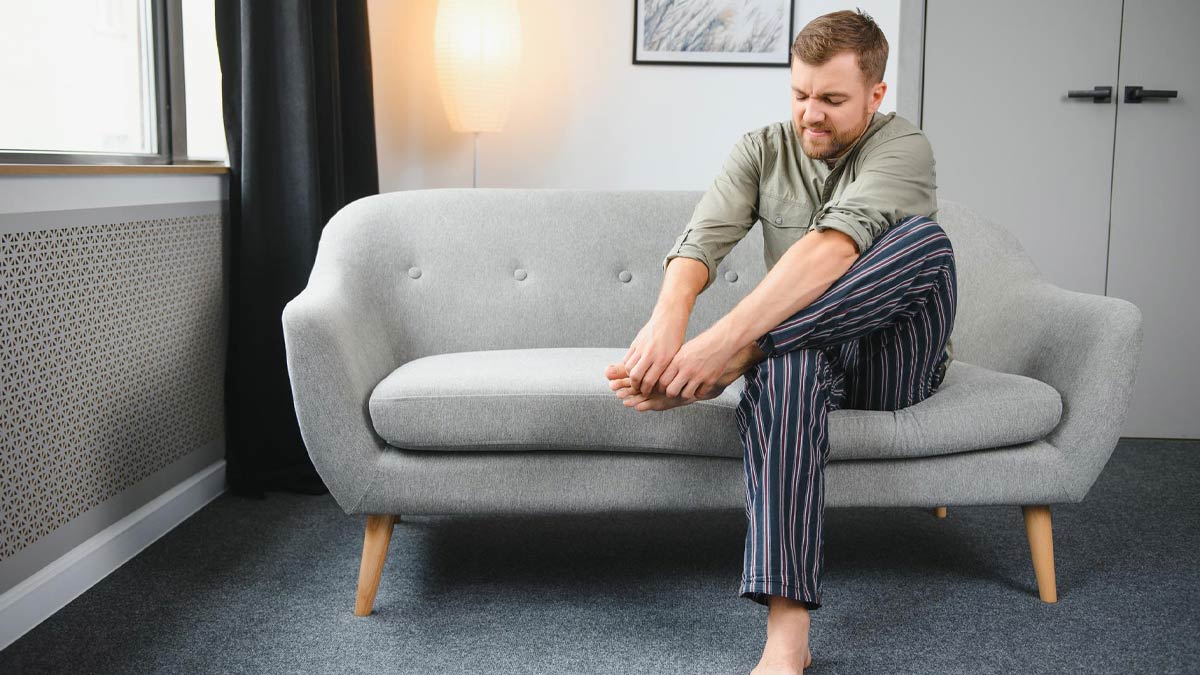
Restless leg syndrome (RLS) is a neurological disorder characterised by an uncontrollable urge to move one’s legs. Symptoms of RLS include an uncomfortable sensation in the legs that is relieved by movement, as well as an urge to move the legs while sitting or lying down. According to a study published in the Harvard health publishing website, more than 40% of RLS patients have a family history of this disorder. In fact, five gene variations have been linked to RLS. The exact cause of RLS is still unknown, but certain factors may increase the risk of developing it, such as low levels of iron, pregnancy, kidney failure, and certain medications. The symptoms of RLS can range from mild to severe, and can interfere with a person’s ability to sleep and carry out daily activities. Treatment options include medications, lifestyle changes, and physical activity.
Table of Content:-
Symptoms Of Restless Leg Syndrome
Symptoms usually appear before the age of 40 if it runs in the family. RLS is a condition that causes an uncontrollable impulse to move one's legs, usually in response to an unpleasant sensation. It usually happens in the evening or at night, when you're seated or lying down. Moving temporarily alleviates the unpleasant sensation.
Most cases of restless legs syndrome are unknown to doctors, however, your genes may play a role. Around half of all RLS patients have a family member who also has the condition.
We can relate RLS with the following:
Chronic illnessess: RLS symptoms can be caused by a number of long-term medical disorders, including iron deficiency, Parkinson's disease, kidney failure or renal illness, diabetes, and peripheral neuropathy.
Also read: Potential Causes For Swollen Feet
Medications: Certain medications, such as anti-nausea medications, antipsychotics, some antidepressants, and cold and allergy medications including antihistamines, may exacerbate symptoms.
Pregnancy: Some women experience RLS during pregnancy, particularly in the third trimester. Symptoms typically disappear within a month of delivery.

Lifestyle. A lack of sleep or another sleep condition, such as apnea, can induce or worsen symptoms. As may the usage of alcohol, tobacco, and caffeine.
For many persons with RLS, the need to move their legs makes sleeping and staying asleep difficult. Many patients with RLS struggle to fall and remain asleep because they want to move their legs.
A study published in National Library Of Medical Biotechnology Information found that 88 percent of individuals suffering from RLS reported at least one sleep-related symptom. RLS symptoms typically appear immediately after falling asleep, and sufferers will kick, squirm, or massage their legs to alleviate the pain. RLS patients may feel compelled to get out of bed and pace or stretch.
Also read: 5 Tips To Get Rid Of Smelly Feet In Winters
If you think you may be experiencing symptoms of RLS, it is important to speak with a doctor to determine the best course of action. Taking steps to manage the symptoms of RLS can help you lead a more comfortable life.
Image credit- freepik
Also watch this video
How we keep this article up to date:
We work with experts and keep a close eye on the latest in health and wellness. Whenever there is a new research or helpful information, we update our articles with accurate and useful advice.
Current Version